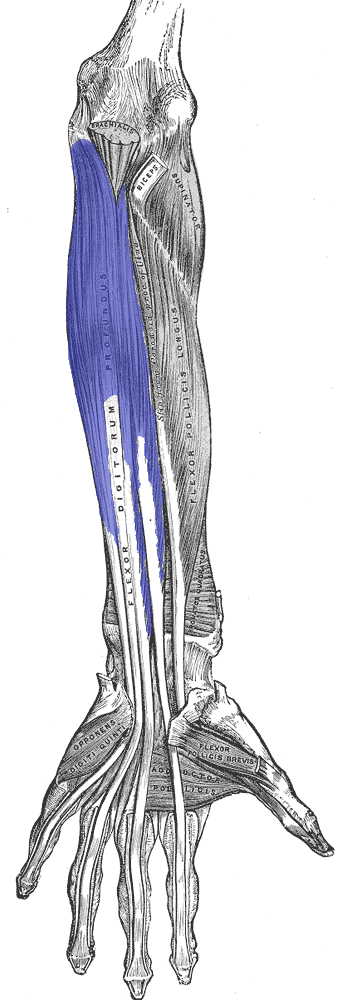MUSCLES-DEEP FLEXORS OF FOREARM
SUMMARY
1. FLEXOR DIGITORUM PROFUNDUS - arises from medial olecranon, anteromedial ulna & interosseous membrane. Gives rise to 4 tendons which traverse the carpal tunnel deep to the FDS tendons. In the palm the tendons diverge, one entering each finger. Each tendon passes b/w the slips of the corresponding superficialis tendon, continuing distally to attach to the base of the terminal phalanx. Supplied by the AIN (median nerve) & ulnar nerve. Flexes the wrist => MCPJ => PIPJ => DIPJ.
2. FLEXOR POLLICIS LONGUS - arises from the anterior surface of radius (b/w anterior oblique line & PQ insertion) & interosseous membrane. The tendon passes into the thumb to insert into the base of the distal phalanx. Supplied by the AIN (median nerve), flexes the phalanges of the thumb.
3. PRONATOR QUADRATUS - arises from the anterior aspect of the lower 1/4 of the ulna. Inserts into the anterolateral surface of the radius. Supplied by the AIN (median nerve). Pronates the forearm.

Image: Gray, Henry. Anatomy of the Human Body. Philadelphia: Lea & Febiger, 1918; Bartleby.com, 2000. www.bartleby.com/107/ [Accessed 16 Apr. 2020].
Reference(s)
R.M.H McMinn (1998). Last’s anatomy: regional and applied. Edinburgh: Churchill Livingstone.
Gray, H., Carter, H.V. and Davidson, G. (2017). Gray’s anatomy. London: Arcturus.